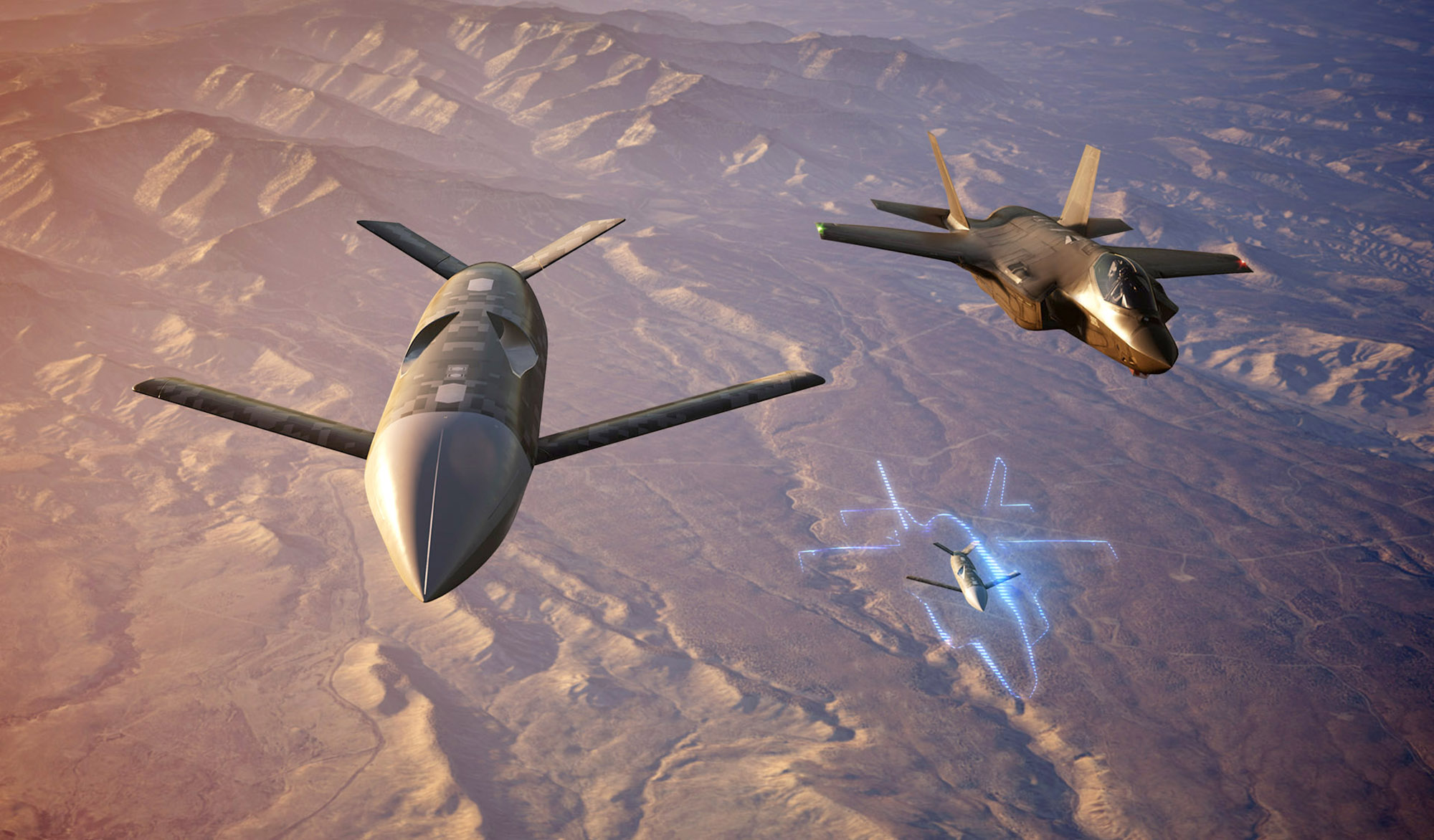Lockheed Martin is ramping up its autonomous drone integration capabilities. It aims to have its F-35 fighter jet operate as a central control hub for up to eight Collaborative Combat Aircraft (CCAs).
The defense company, after being sidelined in the first stage of the US Air Force’s CCA program, is positioning itself as a strong contender for the next increment of development, company officials revealed during an Oct. 22 earnings call.
In contrast to conventional defense programs, the Collaborative Combat Aircraft (CCA) initiative does not follow a “winner-takes-all” approach for contract awards.
Instead, the US Air Force has segmented the program into multiple platforms to be acquired over several phases, with each platform possessing specific capabilities. This rollout will occur in two-year intervals, with one or more platforms chosen in each phase.
The USAF is currently fine-tuning its requirements for a second phase, with plans for additional increments to follow.
At this stage, Collaborative Combat Aircraft (CCA) are expected to function in close coordination with manned combat aircraft under the direct oversight of human operators.
Despite the Air Force’s initial choice to partner with General Atomics and Anduril for Increment 1, Lockheed views Increment 2 as a key opportunity.
The company believes its F-35 and F-22 fighter jets, which represent the pinnacle of the Air Force’s current fifth-generation capabilities, must be equipped to work seamlessly with autonomous systems to maintain their tactical advantage.
Lockheed has already made strides in the integration process, with CEO Jim Taiclet disclosing that the company has developed a specialized pod enabling the F-35 to control CCAs.
This pod, along with a flight control system and a communications network in development, could also be adapted for the F-22.
Ukraine War ‘Setbacks’ Pushing Russia Towards Nuclear Options; Pentagon Intel Warns Of Nuke War
While specifics on the pod’s purpose remain scarce, it may serve as a technology testbed, potentially integrating with the F-35 in the future through software or hardware enhancements.
During September’s Air, Space & Cyber Conference, Lockheed’s Skunk Works division showcased a control station intended to link fifth-generation aircraft with CCAs. General Manager John Clark said that this station could enable a pilot to manage up to eight CCAs effectively.
This technology aims to provide fifth-generation operators with an efficient, tablet-based interface for supervising autonomous aircraft while managing their missions.
The Air Force has yet to detail how manned fighters and CCAs will communicate and function together operationally.
However, with the F-35’s connectivity capabilities, including both Link 16 and the stealthier Multifunction Advanced Data Link, Lockheed hopes to solidify its place in the CCA program by enhancing manned-unmanned interoperability.
The Future Of Collaborative Combat Aircraft
On October 22, Lockheed Martin’s CEO, James Taiclet, said that the Air Force intends to reserve the combat role for Increment 2 of the CCA initiative, leaving the aircraft acquired in Increment 1 strictly for experimental purposes.
Taiclet described Increment 1 as a “proof of concept,” noting its role in testing rather than operational deployment.
He elaborated that Increment 2 aims to develop a combat-ready and scalable design for the uncrewed segment of the system, with Lockheed planning to compete for the forthcoming prototype contract associated with this increment.
However, a top US Air Force officer has countered Taiclet’s remarks, asserting that the first increment of the autonomous, uncrewed fighters will be ready for combat missions by the required timeframe.
The Air Force has yet to issue a formal request for information (RFI) related to the Increment 2 prototypes, and while draft performance requirements are in the works, specific details remain undisclosed.

As the Air Force finalizes the requirements for the Increment 2 prototypes, plans indicate that a contract award is expected in fiscal year 2026, followed by a production contract in 2028.
Such timelines suggest that the CCA family is on a structured path toward operational capability, albeit amid significant debate over its roles and specifications.
Collaborative Combat Aircraft (CCAs) are anticipated to play a vital role in countering the capabilities of the Chinese Air Force. In this regard, Lockheed Martin is prioritizing a cost-effective design approach.
Taiclet noted that the Air Force is likely to seek scalability in Increment 2, which would favor the development of more affordable drones.
Taiclet highlighted the importance of quantity in the equation. He pointed out the necessity of having a sufficient number of aircraft to effectively challenge the J-20, China’s fifth-generation tactical fighter, particularly in the Pacific region.
“The F-35 and F-22 now are the only really competitive jets against the J-20 one-to one,” he added. Therefore, it is critical to deploy an adequate number of these aircraft within a short timeframe to ensure effective deterrence in the Pacific theater.
Lockheed is confident in its ability to meet the scalability requirements for Increment 2. The company’s Skunk Works division is actively working on both the parent and child designs related to all CCA concepts.
- Contact the author at ashishmichel(at)gmail.com
- Follow EurAsian Times on Google News




